Though he was executed in 1936 for the murder of Grace Budd, serial killer Albert Fish claimed he killed 100 victims and "had children in every state."

Bettmann/Getty ImagesSerial killer Albert Fish claimed to have murdered a child in every state.
By November 1934, 10-year-old Grace Budd had been missing for six years. There had been no promising clues or developments regarding her disappearance from her Manhattan home. That is, until her mother Delia Flanagan Budd received an anonymous letter.
“Dear Mrs. Budd,” it read. “On Sunday June the 3 — 1928 I called on you at 406 W. 15 St. Brought you pot cheese — strawberries. We had lunch. Grace sat in my lap and kissed me. I made up my mind to eat her.”
The bizarre, rambling letter that Mrs. Budd received on that cold November evening began with the tale of a deckhand who developed a taste for human flesh and ended with a harrowing description of Mrs. Budd’s daughter being murdered — and roasted in the oven.
Although the written confession was unsigned and nameless, it had been sent by the cannibalistic serial killer Albert Fish. How his exorbitant madness and murderous bloodlust came to be, however, is a tale as macabre and unimaginable as the death of Grace Budd itself.
This is the haunting story of Albert Fish, the unhinged predator who tortured and murdered at least three children in 1920s New York — and may have killed dozens more.
The Disturbing Early Years Of Albert Fish Before He Became “The Gray Man”

Charles Hoff/NY Daily News Archive via Getty ImagesAlbert Fish was a slight, frail man, often described as gray-faced and inconspicuous.
Born on May 19, 1870, in Washington, D.C., to Randall and Ellen Fish, Hamilton Howard “Albert” Fish had many names: the Brooklyn Vampire, the Werewolf of Wysteria, the Gray Man.
Small, quiet, and unassuming, he had a face that blended in with the crowd and a private life that would have frightened even the most hardened criminals.
As a child, Fish was plagued by mental illness — as were a number of his family members. Not only was his brother in an asylum, but his uncle had been diagnosed with mania — while his mother routinely experienced visual hallucinations.
His father was 75 years old at the time of Fish’s birth and died when Albert was just five years old. His widowed mother didn’t have the resources to care for Albert and his three siblings alone and left them with a state orphanage.
It was there that he conceived a passion for pain.
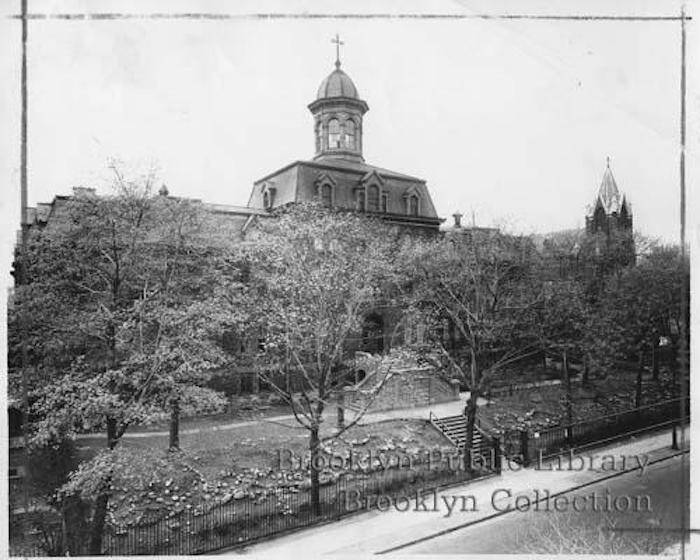
Brooklyn Public Library, Brooklyn CollectionSt. John’s Home for Boys, an orphanage located at Albany Avenue and St. Mark’s Avenue, where Albert Fish spent much of his childhood.
The caretakers at the orphanage regularly beat the children and even occasionally encouraged the children to hurt each other. But while the other children lived in fear of painful punishments, Fish reveled in them.
“I was there ’til I was nearly nine, and that’s where I got started wrong,” Fish later recalled. “We were unmercifully whipped. I saw boys doing many things they should not have done.”
He came to enjoy and associate the pain with pleasure, which would later seep into sexual gratification. When his mother became mentally stable and financially self-sufficient enough to take him home in 1880, she removed him from the orphanage. But the damage had already been done.
Fish not only continued to administer his own beatings but began an unhealthy relationship with a telegraph boy in 1882. The child introduced him to the sexual practices of urolagnia and coprophagia, the consumption of human waste.
Eventually, his sadomasochistic tendencies led him to an obsession with sexual self-mutilation. He would regularly embed needles into his groin and abdomen and flog himself with a nail-studded paddle.
And in 1890, after a 20-year-old Fish moved to New York City, his crimes against children began.
Fish’s Violent Crimes Begin

Wikimedia CommonsAn X-ray of Albert Fish’s pelvis, showing 29 needles embedded into the area.
Fish became increasingly curious about the pain of others and wasted no time after moving to New York City to learn more. He started prostituting himself and molesting young boys, whom he’d lure from their homes to rape and torture them. A nail-studded paddle was his favorite weapon.
Remarkably, in 1898 Fish married a woman his mother had introduced him to and fathered six children with her. While he never violently abused his own, Fish continued raping and torturing other children throughout their childhood.
In 1910, while working as a house painter in Delaware, Fish met Thomas Kedden. Fish and Kedden began a sadomasochistic relationship, though it is unknown how much of it Kedden actually consented to.
In later descriptions of the affair, Fish would hint that Kedden was perhaps intellectually disabled — though it was always difficult to sort fact from fiction in Fish’s tales.
Only 10 days after their initial meeting, Fish lured Kedden to an abandoned farmhouse under the pretense of an assignation. When Kedden arrived, however, he found himself locked inside.
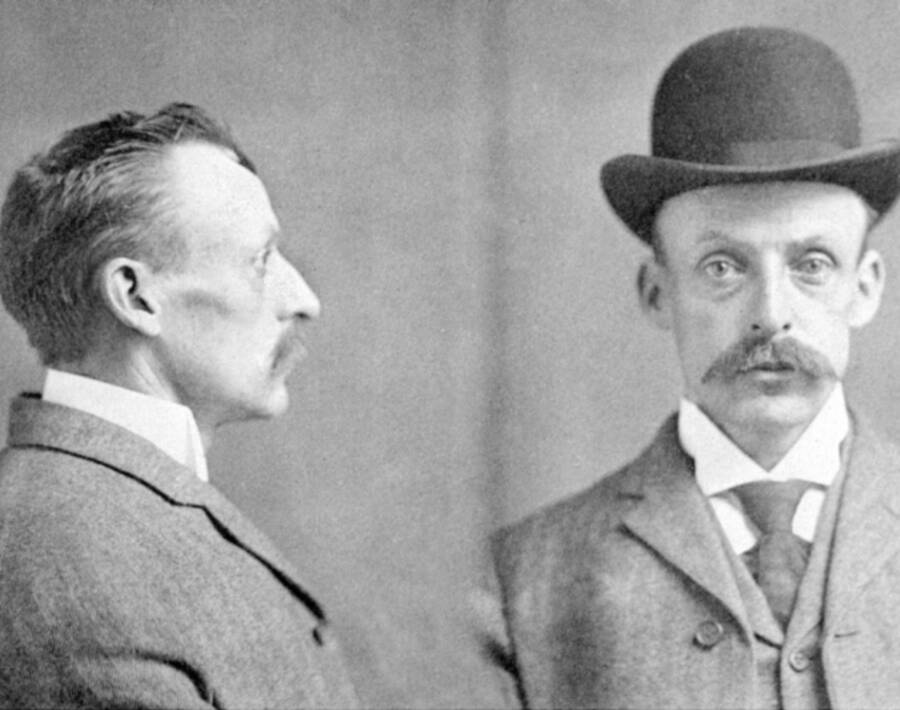
Wikimedia CommonsAlbert Fish eventually started drinking his own urine and eating his own feces.
For two weeks, Fish tortured Kedden. The budding killer mutilated the other man’s body and cut off half his penis. Then, as suddenly as he had arrived, Fish disappeared, leaving Kedden with a ten-dollar bill for his trouble.
“I shall never forget his scream, or the look he gave me,” Fish later recalled.
By 1917, Fish was having difficulty concealing the symptoms of severe mental illness — leading his wife to leave him for another man. Fish’s self-harm grew thereafter, from pressing more and more needles into his groin to stuffing wool covered in lighter fluid into his anus — and setting it on fire.
He began having auditory hallucinations, as well. At one point, he recalled wrapping himself in a carpet on the instructions of John the Apostle.
Fish began teaching his own children strange and oddly sadomasochist games, before developing an obsession with cannibalism. As a precursor to consuming human flesh, he began to eat raw meat — meals he often invited his children to share.
The Brooklyn Vampire Abducts Grace Budd
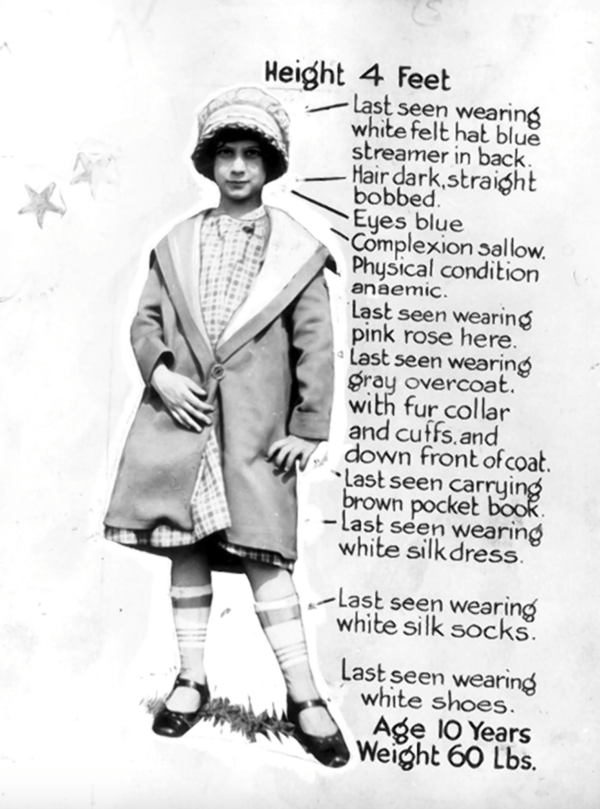
Public DomainA missing person’s pamphlet regarding Grace Budd.
By 1919, his obsession with torture and cannibalism had brought him to contemplate murder. He began to look for vulnerable children, such as intellectually disabled orphans or homeless Black children — youths that he assumed wouldn’t be missed.
He would claim at his trial and in later writings that God was speaking to him, commanding him to torture and consume young children.
He scoured advertisements in local papers put out by families looking for someone to perform housework, or by young men looking for work themselves.
It was through one of these advertisements that he found young Grace Budd.
Grace wasn’t always Albert Fish’s intended target; it was her older brother that he had set his sights on.

Bettmann/Getty ImagesThe house where Fish murdered Grace Budd.
Edward Budd was looking for work on a farm or in the country — that’s why he put out the ad Fish encountered. Fish originally planned on “hiring” Edward and bringing him out to his country house to torture him.
Thus, under the false name Frank Howard, Fish called on the Budd family in their Manhattan home.
He claimed to have some farm work upstate that needed doing, and he was also looking for some help around the house. Was Edward interested?
Edward was inclined to take the job from the unremarkable, gray-faced gentleman.
But suddenly Fish’s interest shifted. While Edward was mulling over his offer, Fish noticed a young girl standing behind her parents: 10-year-old Grace.
He had a new plan, and he didn’t waste any time.
While discussing his fictitious farm and the imaginary work Edward would undertake, Fish casually mentioned that he was in town to visit his niece and attend her birthday party. Would little Grace like to join him?
Albert Fish, the unassuming-looking stranger, convinced Delia and Albert Budd to let him take their daughter along to his niece’s birthday party.
They never saw her again.
What Did Albert Fish Do To Grace Budd?
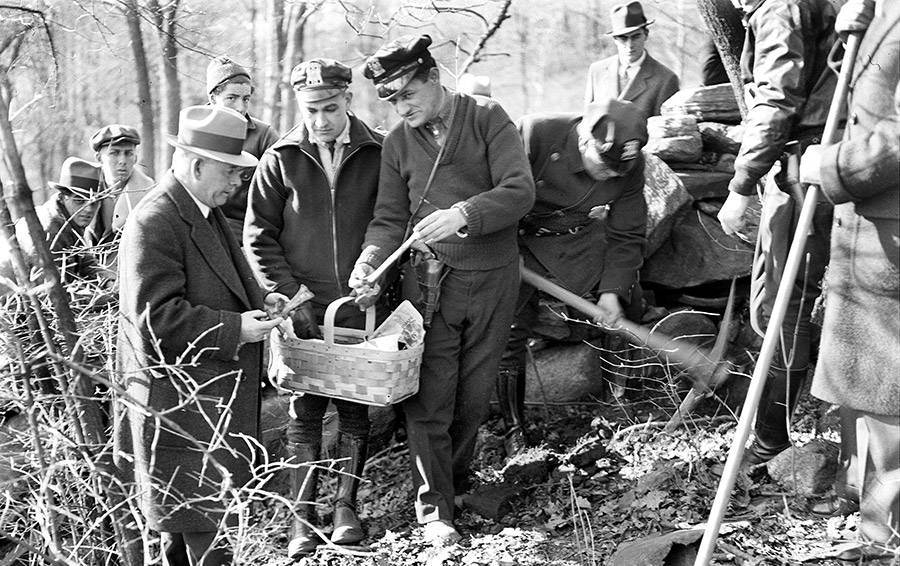
NY Daily News Archive/Getty ImagesMedical Examiner Dr. Amos O. Squire holds bones of the slain Grace Budd after ghastly relics were dug up by cops in an abandoned house in Westchester Hills.
Albert Fish took Grace, dressed in her Sunday best, to his house upstate, the same one he had intended to use as a torture chamber for her brother.
According to the letter that Albert Fish sent to Delia Budd, along with his confession, he hid in an upstairs bedroom — naked, so as not to get blood on his clothing — while Grace picked wildflowers in the yard.
Then he called her inside. When she screamed at the sight of him, he grabbed her before she could flee.
As his gruesome letter read: “First, I stripped her naked. How she did kick, bite, and scratch. I choked her to death, then cut her in small pieces so I could take the meat to my rooms, cook, and eat it … It took me 9 days to eat her entire body.”

Public DomainBefore he died, Albert Fish wrote a detailed account of all his crimes for his lawyer, who never shared the writings because they were simply too horrific.
The letter, which had clearly been intended to cause panic within the Budd home, hastened Albert Fish’s downfall.
The paper he had written the letter on happened to be a piece of stationery from the New York Private Chauffeur’s Benevolent Association. Police inquired with the company and found that the paper had been left behind by a janitor from the company at a rooming house he’d been staying at.
At the same rooming house, a man named Albert Fish was renting a place. Upon learning that Fish bore a strong resemblance to Frank Howard, Grace Budd’s kidnapper, the police set up an interview.
To their surprise, Fish confessed in an instant, practically tripping over himself to reveal the precise details of what he’d done to Grace Budd — as well as dozens of other children.
But in the end, only three children (including Grace) could be concretely proven to be his victims.
Albert Fish’s Other Heinous Crimes

Sing Sing Prison MuseumAlbert Fish was held at New York’s Sing Sing Prison before he was executed by electrocution.
The Grace Budd murder was by far the most infamous of Fish’s crimes. But two other murders were linked to him after his arrest. Unsurprisingly, they’re just as gruesome.
According to Crime Museum, Albert Fish is believed to be responsible for the murder of a 4-year-old boy named Billy Gaffney. Billy had disappeared while playing with a neighbor in Brooklyn on February 11, 1927. That child would later tell police that the “boogey man” took Billy.
The 3-year-old boy described this “boogey man” as a slender, elderly man with gray hair and a gray mustache. At first, cops didn’t take the child seriously. But when they searched all over the neighborhood with no clues, they finally realized he had been abducted. He was never seen again.
But after Fish’s arrest, a motorman on a Brooklyn trolley line came forward to identify him as a “nervous old man” he saw on the same day Billy had disappeared. Apparently, the old man was trying to quiet a little boy sitting next to him on the trolley who was crying for his mother. The man then dragged the little boy off of the trolley.
Fish admitted to the kidnapping and murder of Billy in sickening detail:
I took tools, a good heavy cat-of-nine tails. Home made. Short handle. Cut one of my belts in half, slit these halves in six strips about 8 inches long. I whipped his bare behind till the blood ran from his legs. I cut off his ears — nose — slit his mouth from ear to ear. Gouged out his eyes. He was dead then. I stuck the knife in his belly and held my mouth to his body and drank his blood.
Although no one was ever able to find Billy’s remains, people were able to locate the body of Fish’s third confirmed victim relatively quickly.

Bettmann/Getty ImagesFish was said to have smiled as he confessed to his crimes. March 12, 1935.
In 1924, a young boy named Francis McDonnell vanished while playing with his brother and a group of friends on Staten Island. His body was found in the woods shortly thereafter. He had been strangled by his own suspenders.
Shortly before Albert Fish was put to death, he confessed to being the one who lured Francis into the woods, later assaulting and strangling him. He admitted that he was ready to dismember the boy — but he thought he heard someone approaching and fled the scene.
Albert Fish Is Finally Executed
The trial of Albert Fish began on March 11, 1935 — and demonstrated quite clearly that the man was insane. As expected, his defense pleaded innocent by reason of insanity. Fish admitted that his auditory hallucinations in the form of voices had told him to kill children.
Despite numerous psychiatrists involved in the trial supporting the insanity plea, however, the jury found Fish sane enough to found guilty. The trial took 10 days and ended with a verdict that saw Fish executed by electrocution the following year.
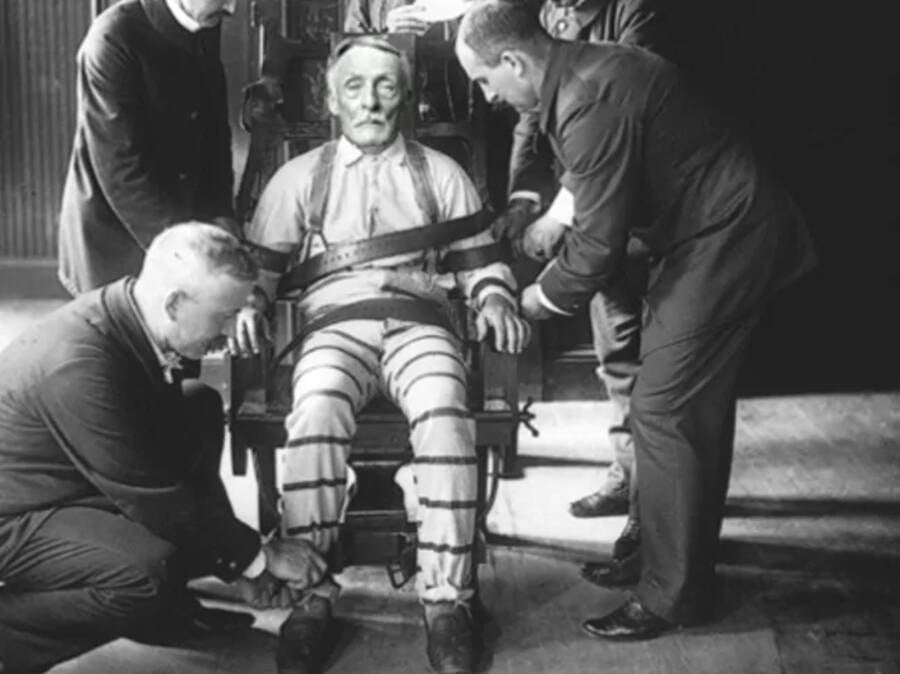
New York State CorrectionsFish was executed on Jan. 16, 1936.
While awaiting his fate behind bars in Sing Sing prison in Ossining, New York, Fish was permitted to write a series of notes regarding his crimes. These would help reporters covering the gruesome case more properly detail his crimes, with a first-hand account sure to entice readers.
While it’s generally believed he killed anywhere between three and nine victims, Fish himself had another figure in mind. His chilling claim that he “had a child in every state” remains unconfirmed. Meanwhile, the man’s detailed recollections from prison have never been released.
Before his execution on January 16, 1936, Albert Fish’s attorney Jack Dempsey refused to share his client’s notes. It only took one glance at them to determine that what Fish had described was too macabre for public consumption.
“I will never show it to anyone,” he said. “It was the most filthy string of obscenities that I have ever read.”
After learning about Albert Fish, the Brooklyn Vampire, read about John Wayne Gacy, the real-life killer clown. Then, learn about Fritz Haarmann who was a popular butcher in 1920s Germany — until people found out he sold human meat.





